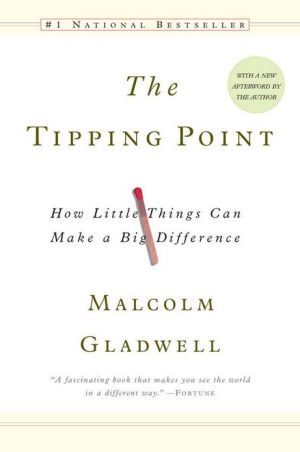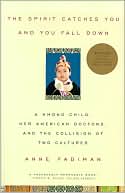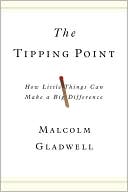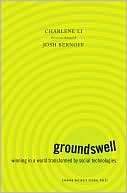Managing the President's Message: The White House Communications Operation
Political scientists are rarely able to study presidents from inside the White House while presidents are governing, campaigning, and delivering thousands of speeches. It’s even rarer to find one who manages to get officials such as political adviser Karl Rove or presidential counselor Dan Bartlett to discuss their strategies while those strategies are under construction. But that is exactly what Martha Joynt Kumar pulls off in her fascinating new book, which draws on her first-hand...
Search in google:
Political scientists are rarely able to study presidents from inside the White House. It's even rarer to find one who manages to get officials such as political adviser Karl Rove or presidential counselor Dan Bartlett to discuss their strategies while they are under construction. But that is exactly what Martha Joynt Kumar pulls off in this fascinating analysis of the media and communications operations of recent administrations.Laced throughout with in-depth statistics, historical insights, and you-are-there interviews with key White House staffers and journalists, this indispensable and comprehensive dissection of presidential communications operations will be key reading for scholars of the White House researching the presidency, political communications, journalism, and any other discipline where how and when one speaks is at least as important as what one says.The paperback edition includes a postscript comparing Barack Obama with Bill Clinton and George W. Bush, highlighting how Obama compares with his predecessors. Kumar shows how, although goals and strategies may be similar, Obama's use of technology indicates his willingness to adjust to new circumstances. Judy Solberg - Library Journal Today's burgeoning variety of news sources poses a real challenge for any political administration wishing to communicate agendas, priorities, and policy initiatives to the public. Kumar (political science, Towson Univ.) examines the White House Office of Communications (which began in the Nixon administration), with particularly detailed analysis of the Clinton and George W. Bush terms. She looks at the delicate balance between Presidents, who must use the press to communicate, and the media, which can play an adversarial role in covering them. She defines the White House's communications role as advocating for policies, defending the President from critics, and coordinating government-wide publicity. Having been a regular in the White House Press Room since the early years of the Clinton administration, Kumar can offer an insider's view. Her interviews with Communications Office staff from earlier administrations, such as Ford's and Reagan's, offer a rare look at day-to-day operations and strategies. For example, Dan Bartlett, White House communications director from 2001 to 2005, explains how his office reached out to unconventional media and sponsored a White House roundtable for George W. Bush to meet with correspondents from hunting, fishing, and wilderness magazines. Kumar notes that even as communications strategies vary, there is stability in the system across administrations. Political science and journalism scholars will appreciate the rich detail and scholarship here. Appropriate for most academic libraries.
Acknowledgments ixIntroduction xiii1 Creating an Effective Communications Operation 12 The Communications Operation of President Bill Clinton 333 The Communications Operation of President George W. Bush 714 White House Communications Advisers 1195 The Press Secretary to the President 1786 The Gaggle and the Daily Briefing 2227 Presidential Press Conferences 2538 Managing the Message 2839 Postscript 306Notes 323Index 351
\ Political Studies ReviewThis is a well-written and detailed book and an ideal starting place from which to study the White House communications operations before moving on to fuller autobiographical accounts or the study of individual presidencies.\ — Rob Griffiths\ \ \ \ \ \ History Wire - Where the Past Comes AliveA must-read for political junkies.\ \ \ National JournalKumar combines her years of observation in the White House press room and hours of frank discussion with current and former officials to create a fascinating—and sometimes disheartening—history of how [the] dance has evolved over the last century.\ — Jane Roh\ \ \ \ \ \ Baltimore SunSome of the book is historical research, but much of it comes from the days and days that Kumar spends in the belly of the beast, hanging out in the press room in the West Wing of the White House.\ — Michael Hill\ \ \ \ \ \ Political CommunicationIts place among scholarship on the presidency was quickly sealed when the presidency section of APSA awarded it the 2008 Richard E. Neustadt Award for best book on the presidency. The book is rich with detail regarding the Clinton and Bush communications and press operations... there is much to be mined in Kumar’s descriptions and explanations.\ — Stephanie Burkhalter\ \ \ \ \ \ Political Science QuarterlyKumar's insightful Managing the President's Message provides much-needed insight, charting the recent changes in presidential media management strategies and in the routines practiced by the two most-recent White Houses, and provides an important addition to the academic discourse on political communication, framing, and leadership.\ \ \ \ \ Library JournalToday's burgeoning variety of news sources poses a real challenge for any political administration wishing to communicate agendas, priorities, and policy initiatives to the public. Kumar (political science, Towson Univ.) examines the White House Office of Communications (which began in the Nixon administration), with particularly detailed analysis of the Clinton and George W. Bush terms. She looks at the delicate balance between Presidents, who must use the press to communicate, and the media, which can play an adversarial role in covering them. She defines the White House's communications role as advocating for policies, defending the President from critics, and coordinating government-wide publicity. Having been a regular in the White House Press Room since the early years of the Clinton administration, Kumar can offer an insider's view. Her interviews with Communications Office staff from earlier administrations, such as Ford's and Reagan's, offer a rare look at day-to-day operations and strategies. For example, Dan Bartlett, White House communications director from 2001 to 2005, explains how his office reached out to unconventional media and sponsored a White House roundtable for George W. Bush to meet with correspondents from hunting, fishing, and wilderness magazines. Kumar notes that even as communications strategies vary, there is stability in the system across administrations. Political science and journalism scholars will appreciate the rich detail and scholarship here. Appropriate for most academic libraries.\ —Judy Solberg\ \ \








